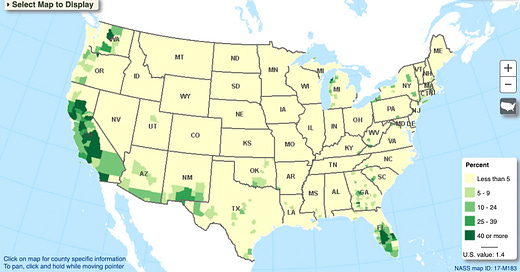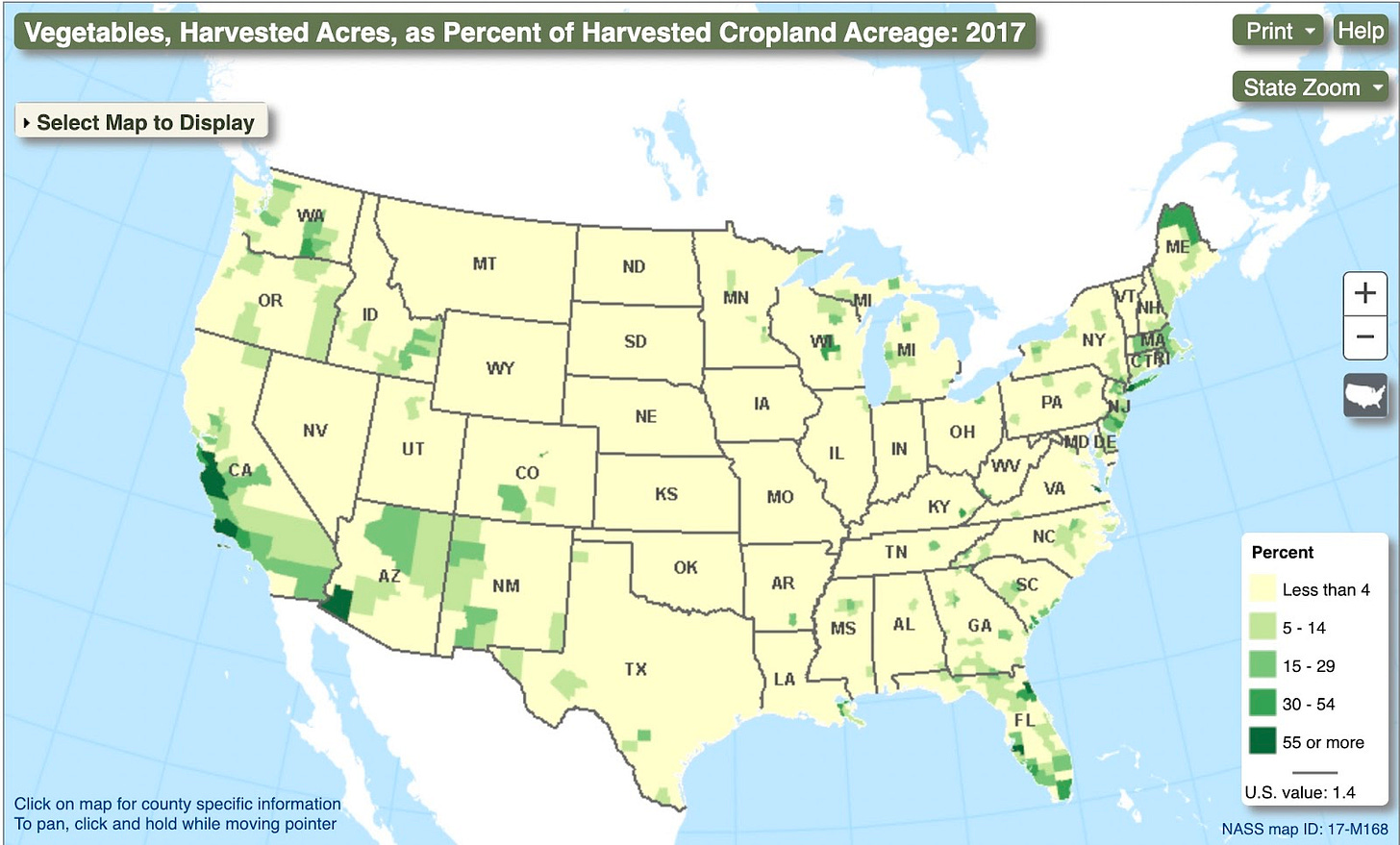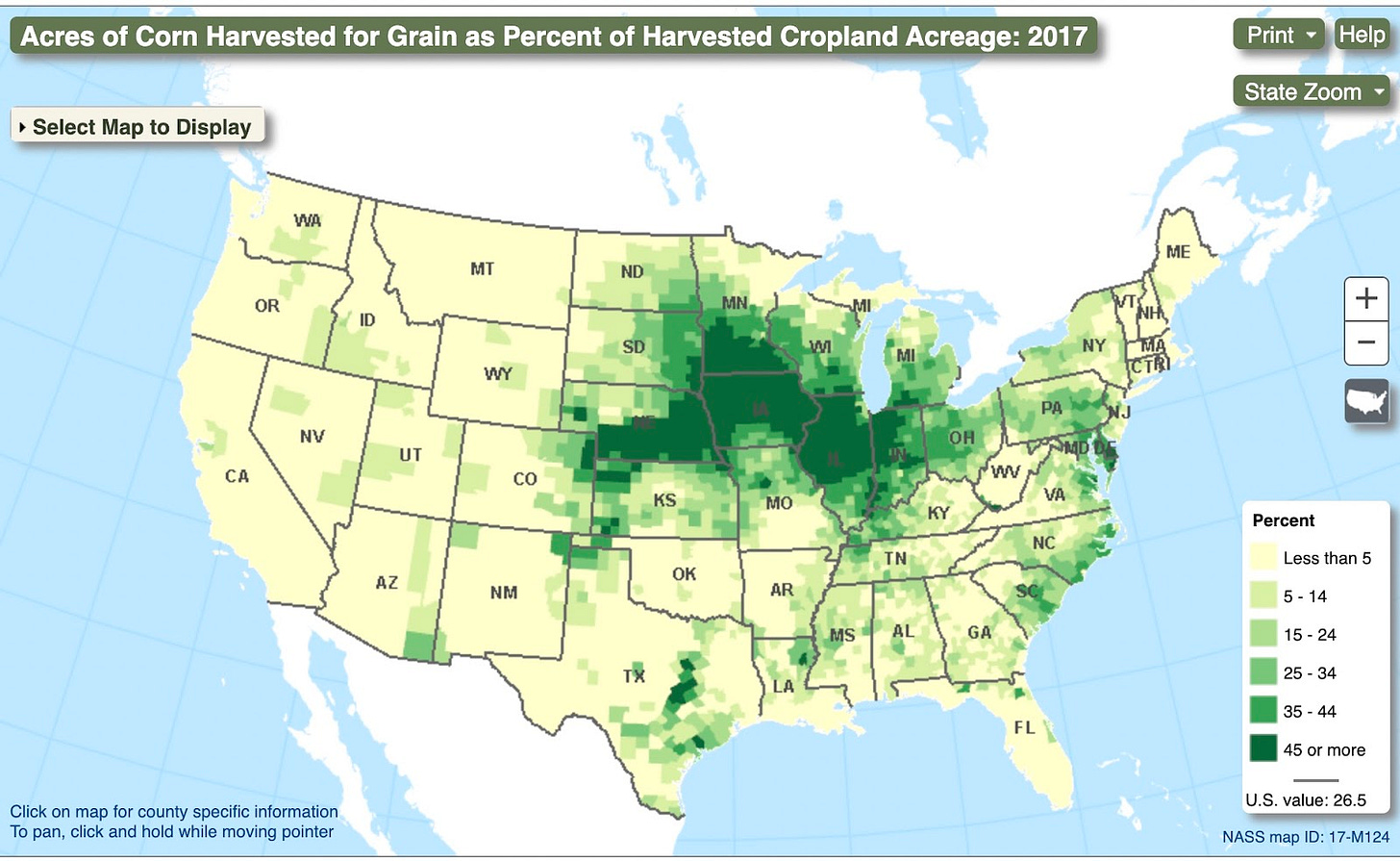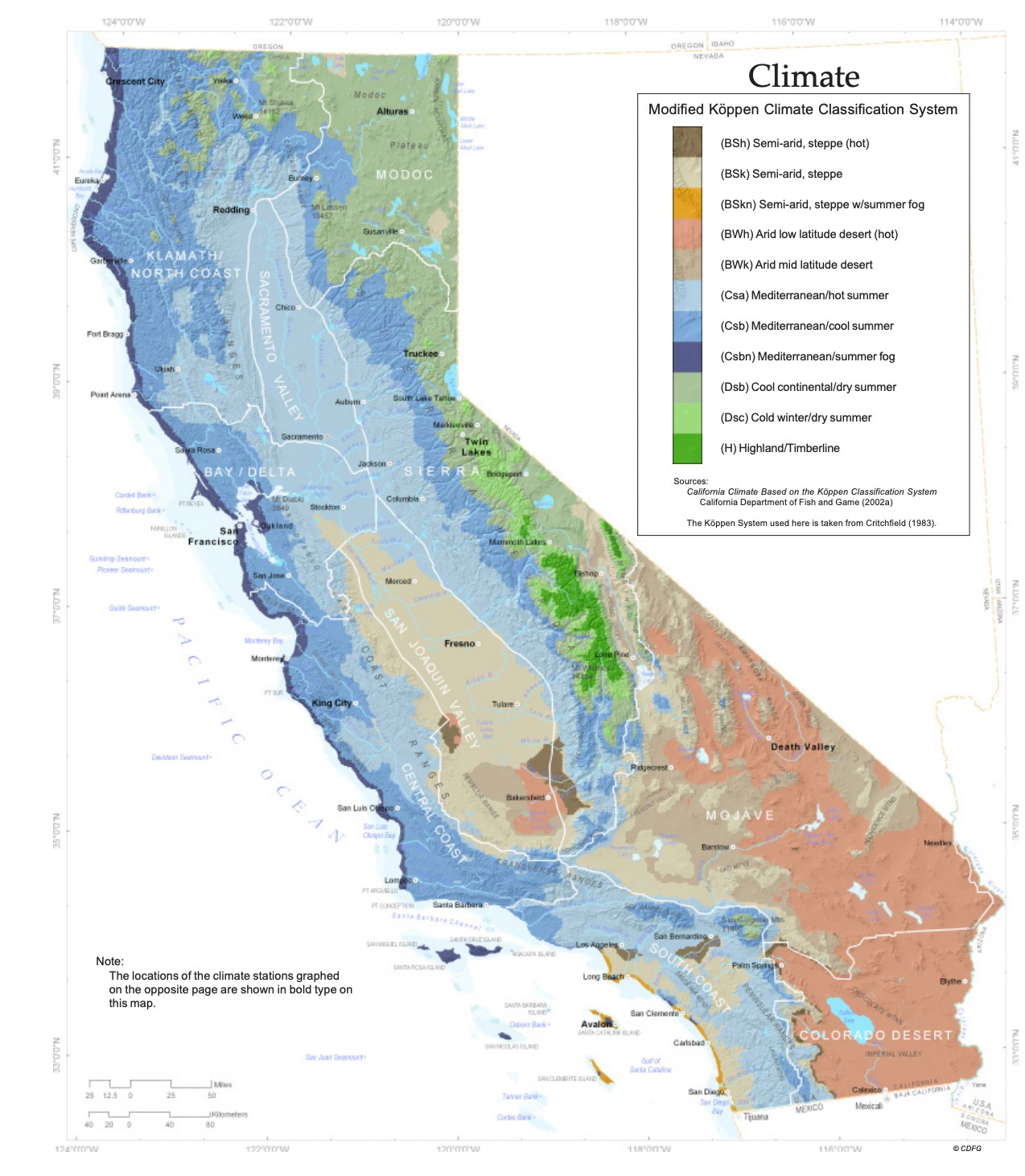The Importance of California's Farmland
California's agricultural industry is an irreplaceable resource for the Country
California reigns supreme in agricultural productivity and diversity, yielding over 400 crops within its fertile soils - far eclipsing any other state. Within the United States, over 30% of the country’s vegetables and nearly 75% of the country’s fruits and nuts are grown in California. Attesting to its fertility, the state generates 10.4% of the U.S. agricultural revenue with only 2.7%1 of the total farmland in acres. Or in sheer absolute terms - contributing nearly $50 billion2 annually from a land area under 50,000 square miles, making California a domestic and global producer without parallel.
Yet amidst intensifying water scarcity, shortsighted proposals urge removal of these vital fields. Such plans are already in motion as water restrictions have compelled the fallowing of multiple millions of acres of farmland- betraying ignorance of how purposeful investment into California’s arid lands catalyzed unmatched yields. Dry summers, plus engineered water security, enable California to escape weather volatility impairing other states and grow crops unattainable elsewhere. The state’s agricultural dominance is made possible by both extensive irrigation infrastructure as well as an exceptional convergence of diverse microclimates concentrated within California’s borders. Rather than dismantle generations of agricultural development, policy must leverage the advantages endowed to the Golden State. There is no other choice. California’s farmland is an irreplaceable resource for the country.
Irrigation projects didn't stock these lands despite inadequate rainfall but because of it. The proposition was straightforward, yet daring in its ambition: the abolishment of rainfall’s authority altogether. Though rain can nourish crops, even mellow showers become merciless once they pass optimal quantities. Each crop has an exact range of precipitation required for healthy yields, unique to each varietal. Too little moisture stunts growth but excess likewise brings damage.
Sodden earth delays harvests because mechanical equipment suffers damage from mud. Rain leeches nitrogen fertilizers and naturally occurring soil nutrients like sulfur, thereby stunting crop growth. Lettuce and other leafy greens suffer decay from excessive water as the moisture seeps into internal cell layers faster than plants can absorb.
Worst of all, moisture at the wrong time summons blight, crop-killing plagues of mold, fungus and disease in crops. Nowhere is this a greater risk than during germination for low-growing crops like rice, beans and tomatoes, and during flowering for nut trees. Entire season’s yields perish overnight as farmers watch their year’s pay turn to muck. Rain's unchecked rule leaves farmers fatefully beholden, with crops subject to ruin by untimely storms.
California’s unmatched agricultural productivity stems from the ingenious recognition of natural limitations as blessings in disguise. At the heart of California’s farming empire is its rare Mediterranean climate, which comprises just 3% of global land area and is absent beyond the state’s borders. Long dry seasons, now perceived as impediments, enabled complete control over crop growth and timing. With the construction of massive hydraulic infrastructure to channel water from distant sources, California’s sun-baked soils were transformed into fertile grounds ripe for bountiful cultivation. The success was instantaneous. No sooner had water begun flowing through arid lands than farmers from across humid states migrated en masse to California, eager to capitalize on production potential that outpaced even the most rainy eastern farmlands.
California’s exceptionally long growing season supplies Americans with access to reasonably-priced produce year-round. The state furnishes a majority of the nation’s winter greens and heads two-thirds of lettuce output shipped nationally through all four seasons. Within fertile thermal belts, citrus fruits like oranges, lemons and grapefruits flourish in the winter months, ripening for late fall harvests. And when frigid weather paralyzes vegetable growth across much of the country, California outpaces all other states in fresh crop shipments.
The vast majority of the United States lacks the necessary conditions for widespread agricultural production. Only around 13% of total U.S. land area has farmable capacity, focused predominantly on core staple commodities compatible with regional climate factors. For instance, the Midwest specializes in corn and soybeans, crops suited for the region’s abundant precipitation. Meanwhile hot and humid Florida is a leading citrus provider, albeit unable to cultivate moisture-sensitive crops.
In contrast, California uniquely features a remarkable diversity of microclimates creating optimal conditions for growing nearly any crop imaginable. This symphony of diverse climate types clustered together is made possible by the immense variances in the state’s terrain. With the great ranges in altitude and range in distance to and from the ocean, California is blessed with an array of different climates- from our most consistently cold climate atop mount shasta, to our hottest, less than a 100 miles away, in death valley. The state is one of the few places in the world where 5 major climate types occur within close proximity of each other. The only other comparable convergence of extremes in the world is central Chile, where climate diversity is intensified further by andean topography. The rest of America’s states simply lack the geographical characteristics that allow the production of a diverse array of agricultural products in California.
In essence, proposals to curtail Californian agriculture lose sight of why we purposefully nurtured this region into an agricultural powerhouse. Over 150 years, visionary state and federal commitments coupled the natural blessing of a rare climate with engineering to create unprecedented productivity. But this capacity cannot be relocated or recreated; it would be financially as well as practically unviable for other states to attempt mimicking such crops at scale. What takes generations to build can disappear rapidly.
The loss of California's farmland would severely compromise our domestic food supply and self-sufficiency. We quite literally need California's agriculture to feed ourselves. While facing pressing water scarcity issues, the solution is not to cease or relocate this irreplaceable production capacity built over generations, but rather to continue California’s legacy of innovative technology and policy. What the Golden State has created is too vitally important to be left to wither. As such, ceaselessly chipping away at this uniquely fertile region is unconscionable - we must preserve the irreplaceable.
in gross receipts for agricultural products







Would love to see from you a technical analysis of water supplies/demands which paint a clear picture of “this is how much water we can afford to use for irrigation” (of course will depend on the specific area).